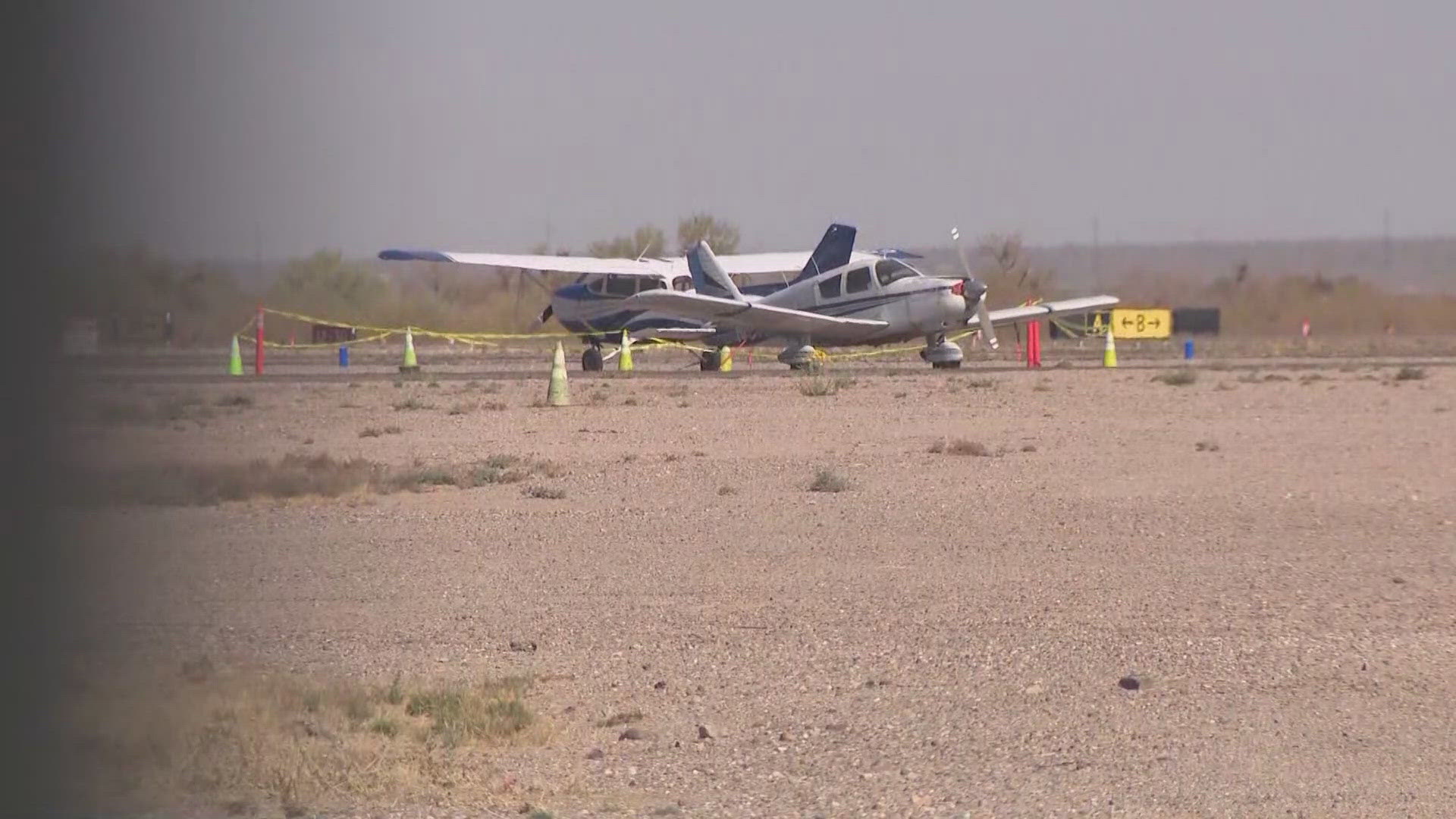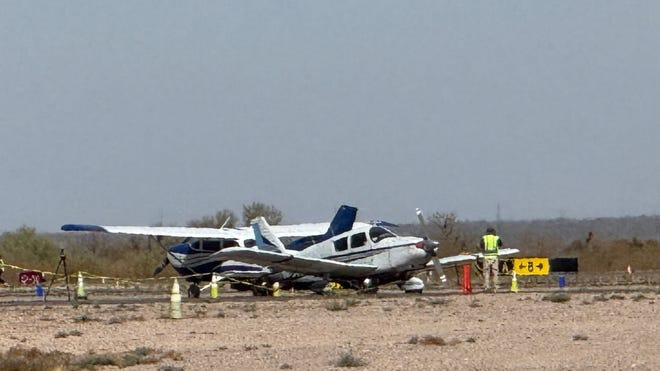On the morning of February 16, 2025, a devastating accident occurred at Marana Regional Airport in Arizona, leading to the tragic loss of two lives. The incident involved two small aircraft—a Cessna 172S and a Lancair 360 MK II—that collided mid-air around 8:30 a.m. local time. The collision has not only shocked the local community but also brought to light the safety concerns at regional airports, especially those lacking air traffic control towers.
According to reports, both aircraft were carrying two people each, and while one plane managed to land safely, the other crashed near the runway and caught fire. The National Transportation Safety Board (NTSB) confirmed the fatalities were from one of the planes, while the passengers of the other aircraft were fortunate to escape the crash without any injuries.
Details of the Accident
The collision occurred under circumstances that remain under investigation. Both planes were reportedly on approach to Marana Regional Airport when the mid-air collision took place. The Cessna 172S, a four-seat general aviation aircraft, was able to land following the crash, though it sustained significant damage. On the other hand, the Lancair 360 MK II, a high-performance, two-seat aircraft, crashed violently, catching fire upon impact. Emergency response teams immediately rushed to the site, but unfortunately, the two passengers onboard the Lancair were confirmed dead at the scene.
The NTSB, which is tasked with investigating aviation accidents, has confirmed that the fatalities occurred on the Lancair plane. The other aircraft’s passengers, who were aboard the Cessna, were unharmed despite the severity of the collision. Local authorities have since expressed their condolences to the families of the victims, and the airport has been closed temporarily for investigation.

Marana Regional Airport: A Lack of Air Traffic Control Tower
One of the key issues raised by this tragic event is the lack of an air traffic control tower at Marana Regional Airport. While this is not uncommon for regional airports, the absence of an air traffic control tower can sometimes lead to challenges in managing air traffic and ensuring the safety of aircraft, especially during busy periods. Marana Regional Airport operates under the FAA’s Air Traffic Control Tower Program, which offers certain benefits and resources but also raises questions about the level of safety available at airports without a full-time air traffic control tower.
Although Marana Regional Airport is equipped with some safety infrastructure, it does not have a full-time air traffic control tower, which might have prevented this collision by providing better management of air traffic around the airport. The FAA’s Air Traffic Control Tower Program is designed to provide a combination of services, but at airports like Marana, air traffic management relies heavily on the pilots’ responsibility to communicate with other aircraft. This can sometimes lead to oversights or mistakes in a fast-paced aviation environment.

Immediate Response and Investigation
Upon hearing about the collision, first responders rushed to the scene within minutes. The response from local authorities and emergency services was swift, and efforts to contain the fire from the crash and ensure the safety of other aircraft were prioritized. However, despite the rapid response, the two individuals aboard the Lancair 360 MK II were confirmed dead.
In the aftermath of the crash, the airport was temporarily closed to allow for the investigation and the removal of the wreckage. The NTSB is leading the investigation into the cause of the crash, and they will be looking into a variety of factors, including weather conditions, the possibility of mechanical failure, and any issues related to air traffic control or pilot error.
At this point, it is unclear exactly what led to the collision. However, the investigation is expected to take several weeks as experts from the NTSB analyze the wreckage, interview witnesses, and review any available radar or flight data. The NTSB’s findings will help clarify whether any preventable safety measures were overlooked or whether the crash was the result of a series of unfortunate events.

The Importance of Aviation Safety
This tragic crash serves as a poignant reminder of the inherent risks involved in aviation and the constant need for improvements in safety protocols. While general aviation flights are generally safe, accidents like this one highlight the vulnerability of small aircraft to accidents in certain circumstances. Small aircraft are often more susceptible to weather-related issues, mechanical failures, and human error compared to commercial airliners. As such, it is crucial for both airports and pilots to adhere to the highest safety standards to prevent accidents like this from occurring.
One area that may require further attention is the availability of air traffic control services at regional airports. Air traffic control towers provide critical services that help prevent mid-air collisions by ensuring proper separation between aircraft and giving pilots clear instructions. Without such services, pilots must rely on their own situational awareness and the cooperation of other pilots in the area. This can create opportunities for errors, especially if there is limited visibility or miscommunication.

Local Community and Official Reactions
Following the accident, the community of Marana and the surrounding areas expressed their shock and sorrow. Local residents have come together to mourn the loss of life and to support the families of the victims. Marana officials have also expressed their deepest condolences, thanking the first responders for their swift actions in the wake of the tragedy.
The incident has raised concerns about the level of safety at regional airports, and some have called for increased investment in air traffic control towers at smaller airports to enhance the safety of all aviation operations. Some experts suggest that the FAA’s Air Traffic Control Tower Program should be expanded to include more airports, especially those that serve as hubs for general aviation.
While the NTSB investigation is ongoing, Marana Regional Airport officials have assured the public that they are cooperating fully with the investigation and are committed to ensuring that all necessary safety measures are in place moving forward.

The Future of Aviation Safety at Regional Airports
The Marana Regional Airport crash underscores the importance of continuous improvements in aviation safety, particularly at regional and smaller airports. With air traffic volumes increasing at these airports, it is critical for safety measures to evolve and adapt to the needs of modern aviation. While air traffic control towers are a key component of airport safety, there are other safety measures that can be implemented, such as improved training for pilots, better communication protocols, and the use of advanced technology to help prevent accidents.
As the investigation continues, Marana Regional Airport and the aviation community as a whole will no doubt be reviewing current safety procedures and considering how best to implement changes that could help prevent similar tragedies in the future. For now, the focus remains on the families of the victims, who are left to cope with the devastating loss of their loved ones.
Conclusion
The tragic mid-air collision at Marana Regional Airport serves as a stark reminder of the risks involved in aviation, even at smaller airports. While the investigation continues, it is clear that improvements in safety protocols and air traffic management are needed to ensure the safety of pilots and passengers alike. As the community mourns the loss of two individuals, the incident also raises important questions about the safety measures in place at regional airports and what more can be done to prevent such accidents in the future.
